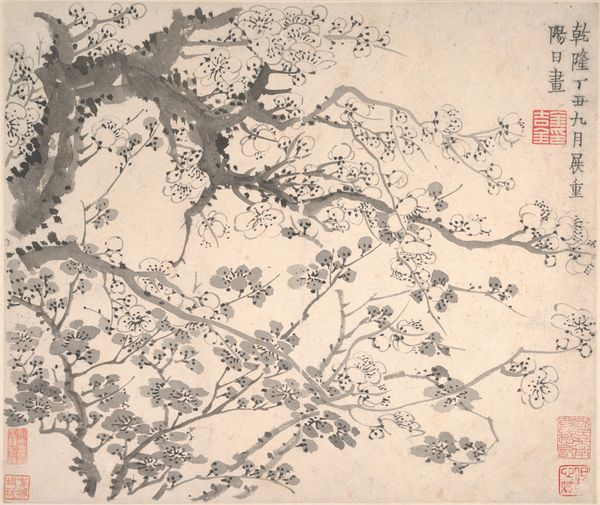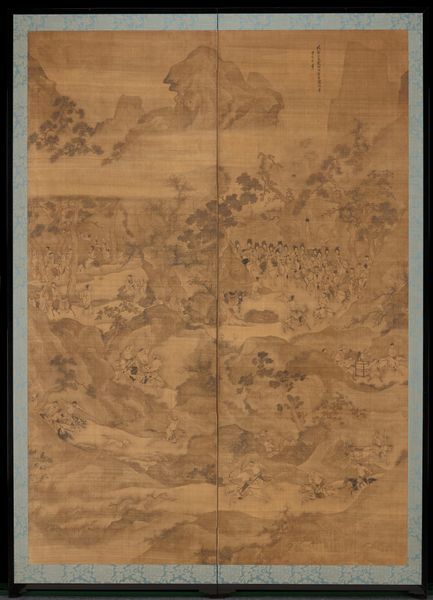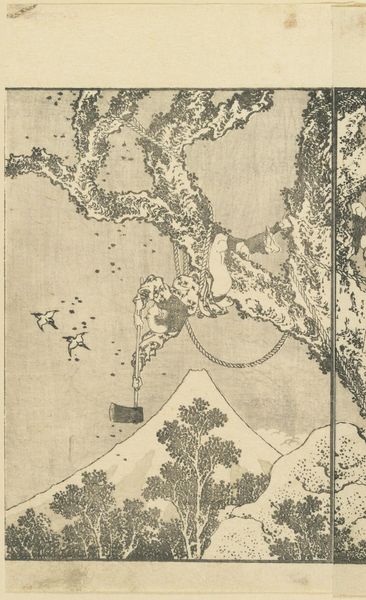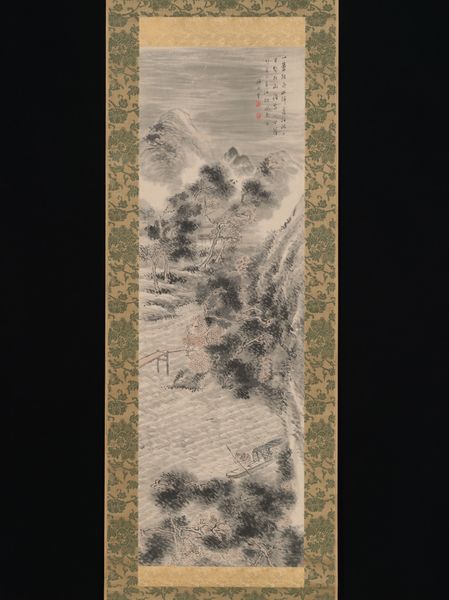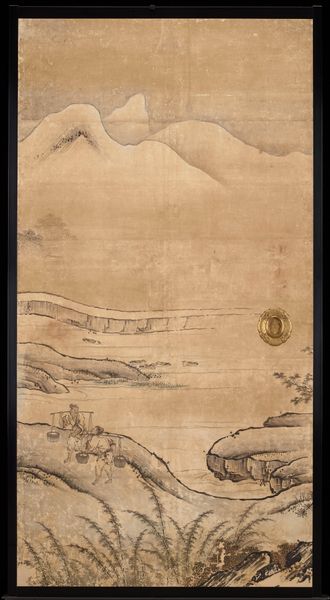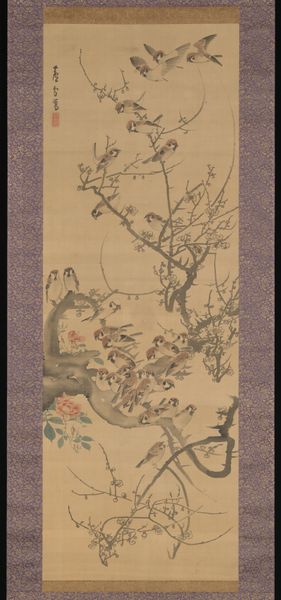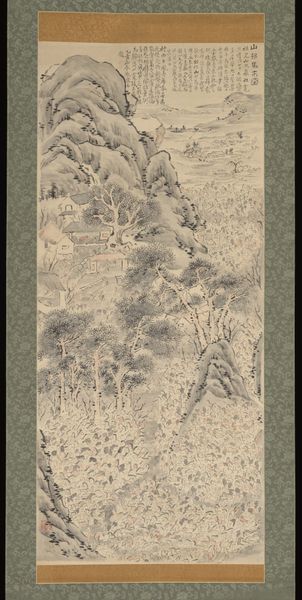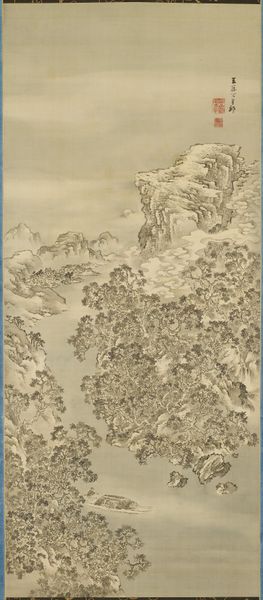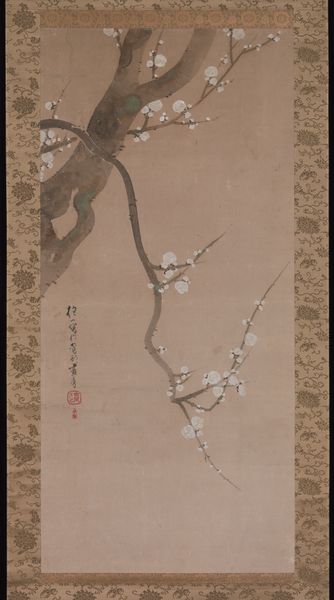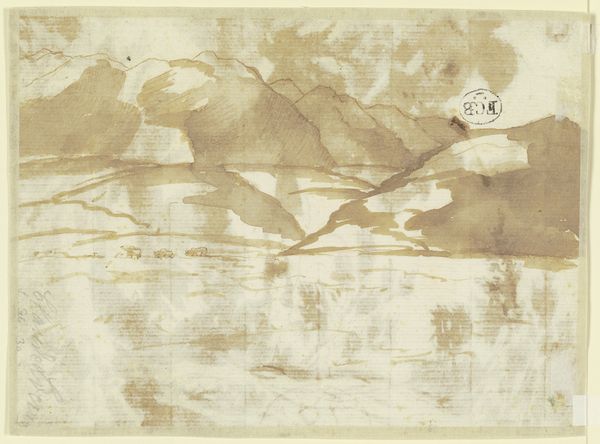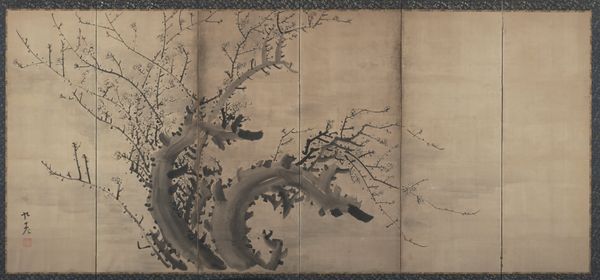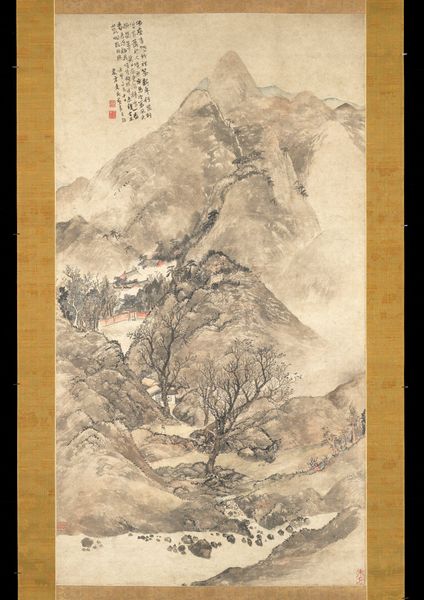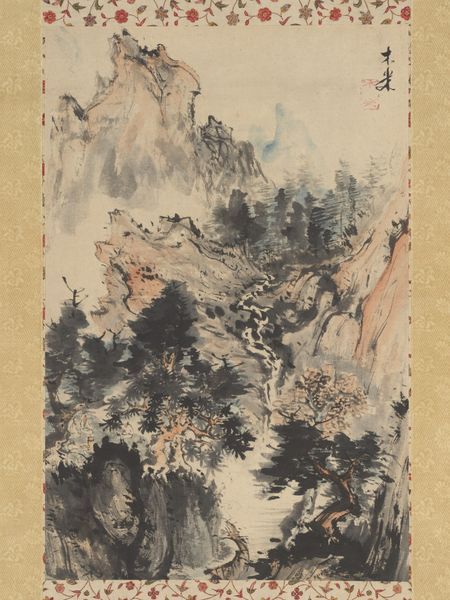
drawing, paper, ink-on-paper, ink
#
drawing
#
ink painting
#
asian-art
#
landscape
#
paper
#
ink-on-paper
#
ink
#
line
Dimensions: 53 3/16 × 26 1/16 in. (135.1 × 66.2 cm) (image)83 3/8 × 27 1/2 in. (211.77 × 69.85 cm) (without roller)
Copyright: Public Domain
Curator: Standing before us is a 19th-century ink-on-paper drawing entitled "Plum Drawn from the Mind" by Baichi Dōjin. Editor: It strikes me as surprisingly modern, this stark composition. There’s a rawness to the mark-making, a sense of immediacy in how the ink is applied. Curator: Absolutely. Consider the material conditions of its making: ink, brush, paper, all readily available and inexpensive, yet imbued here with immense cultural significance. The plum blossom itself, deeply embedded in East Asian philosophy, signifies resilience, purity, and the coming of spring after hardship. Editor: You know, looking closely, I’m fascinated by the varying densities of the ink wash. The artist's process becomes almost palpable; the layering, the absorption into the paper. How does the interplay of these materials, and their very availability, shape the work’s reception, its meaning? Curator: It's essential to see the socio-political context in which this piece was made. In a period defined by strict artistic academies and patronage structures, Baichi Dōjin, using humble materials, created a space of meditative rebellion, expressing ideals connected to the Literati. The choice of plum blossoms becomes, therefore, an act of claiming both history and identity, a dialogue with past masters filtered through individual lived experience. Editor: A quiet rebellion, performed through readily available materials. The sheer abundance of plum blossoms hints, perhaps, at accessibility, and the potential of mass appeal? And this particular printmaking method allowed him to create it over and over, a way to defy social restrictions. Curator: Precisely, although Dōjin isn’t explicitly challenging social norms, there is an invitation to reimagine one’s relationship to self, nature and power. This drawing serves as a potent articulation of internal transformation, resilience in adversity, echoing struggles faced by many across various identities throughout time. Editor: It does invite a certain introspection. Thinking about art as a material act and process opens up fascinating perspectives. The paper itself becomes an artifact. Curator: Indeed, an artifact imbued with history, process and perhaps even a spark of hope, echoing across time. Editor: A perfect point on which to leave it.
Comments
minneapolisinstituteofart almost 2 years ago
⋮
The practice of painting blossoming plum branches in monochrome ink seems to have emerged in tenth-century China and became popular among the Japanese literati of the eighteenth and nineteenth centuries. Delicate flowers budding from a wizened plum tree during the winter carry associations of longevity, renewal, and purity. The inscription, shai, meaning ‘drawn from the mind,’ is the opposite of shasei, or ‘sketched from life;’ indeed, this is a particularly free-spirited and imaginative interpretation of this subject. A variety of tones of ink applied in impressionistic splotches with a wet brush convey the vital splendor of a plum tree breaking into a profusion of blossoms at the cusp of spring. Baichi was a priest of the Pure Land or Jōdo school of Buddhism, known for his poetry, calligraphy, and paintings of landscapes and flora.
Join the conversation
Join millions of artists and users on Artera today and experience the ultimate creative platform.

